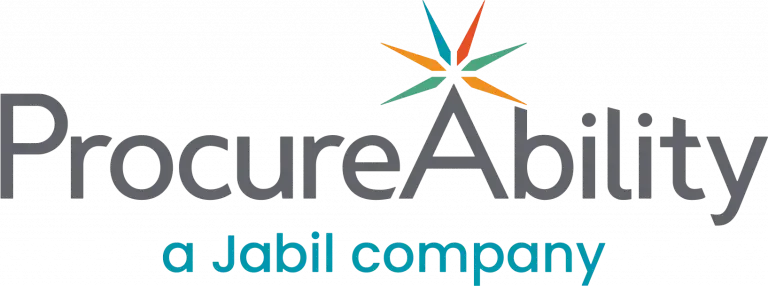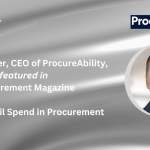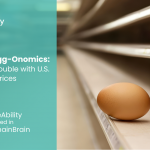Supply Chain Stability: The art of an ever-shifting balance between resiliency and efficiency
By: Joe Adamski
 The US finds itself once again at a turning point with escalating geopolitical risks, election cycle chicanery, and shifts on our monetary policy impacting the overall economy. The ongoing tension between resiliency and efficiency in supply chains, exacerbated by geopolitical and domestic events, will continue to drive increased costs for manufacturers. The packaging industry supports a wide cross section of materials and services providers, with overall packaging demand following macroeconomic trends. Manufacturers rebalancing production offshore and onshore will shift packaging demand, logistics needs, and services required across specific regions within the US. When coupled with packaging trends such as waste elimination, environmental improvements, and optimizing for direct to consumer, we can guarantee that what we do today will be constantly evolving for tomorrow.
The US finds itself once again at a turning point with escalating geopolitical risks, election cycle chicanery, and shifts on our monetary policy impacting the overall economy. The ongoing tension between resiliency and efficiency in supply chains, exacerbated by geopolitical and domestic events, will continue to drive increased costs for manufacturers. The packaging industry supports a wide cross section of materials and services providers, with overall packaging demand following macroeconomic trends. Manufacturers rebalancing production offshore and onshore will shift packaging demand, logistics needs, and services required across specific regions within the US. When coupled with packaging trends such as waste elimination, environmental improvements, and optimizing for direct to consumer, we can guarantee that what we do today will be constantly evolving for tomorrow.
Finding an artful balance during volatile market conditions
Corporations and stakeholders like certainty and stability—and value productivity and efficiency. While inflation has retreated from a 50-year high, it remains a problem as consumers have seen their buying power drastically eroded. Manufacturers have responded by downsizing packages or finding other cost savings means, often by changing or restricting packaging. The removal of Chevron deference will have the biggest impact on environmental policy since the creation of the EPA; and this will in turn have a significant impact on packaging manufacturers. Looming threats of trade wars or price controls drive an anticipation of significant consumer disruption regardless of which party triumphs in the election.
Not surprisingly, these conditions have impacted the packaging industry significantly, as this is a sector that is sensitive to rapidly changing demand, increasing costs, and logistics issues. Areas of top concern include:
- The rising cost of raw materials, such as paper, cardboard, and plastics, which has directly increased the cost of packaging production
- The surge in energy prices, which has led to higher energy costs for packaging producers
- Increased transportation costs due to higher fuel prices and supply chain disruptions, which have added to the overall cost of packaging
- Environmental impact concerns of materials that become waste
While these challenges are expected to remain throughout 2025 and beyond, the packaging industry has a history of adapting and innovating to respond to constant changes. One example is fit-for-purpose packaging solutions. Traditional filler materials such as plastics and Styrofoam are fading from use in favor of bio-degradable solutions or organic solutions that mimic the same properties, but do not have the detrimental environmental impact. Microplastics are another trigger for innovation due to mounting concerns about their environmental and health risks; any packaging materials that contribute to this problem will be flagged and may face regulation in the future.
Identifying the best means to the end
Manufacturers continue to develop means to lower their overall energy usage and costs. Solar power can leverage the significant roof space available in many plants. Utilizing power purchase agreements from green energy providers has proven an effective alternative to traditional distributed electricity. Reducing energy demand, through more efficient processes, production machinery, and optimization has been effectively leveraged to only use what energy is required. In the future, wearables will enable even greater optimization as automation can better control energy usage based on physical location and needs of the workforce.
At its core, consumer packaging should be viewed as a means of delivering the product rather than an end in itself. We must explore alternative ways to get products into consumers’ hands that minimize packaging costs, material waste, and environmental impact. Traditional approaches, such as lightweighting or optimizing package size, have their limits and may not be sufficient on their own. Solutions that optimize for delivery and minimize waste will win out in the long run. While primary and secondary packaging will always play a crucial role in attracting consumers, it is essential to optimize these materials to minimize their environmental impact while still appealing to consumers. This must be balanced with necessary consumer protection requirements, but innovations that ensure quality, freshness, and microbe prevention need to continue. Additionally, incorporating blockchain tools into packaging—such as RFID for high-value items or QR code scanners—will enhance product traceability and provide real-time supply chain information.
Being part of the solution
Producers and manufacturers that fail to lean into these changes will be at risk of being left behind. Research shows that consumers are increasingly prioritizing eco-friendly options when they click to purchase. However, this doesn’t mean they will ignore price all together but try to strike a balance between sustainability and affordability. While the consumer will continue to expect environmental considerations, we do see a continued push for governmental mandates, especially as technology continues to advance.
As laws and regulations push and pull the industry, we see brands increasingly relying on their suppliers to deliver solutions to these demands through packaging. While economic constraints may pose challenges, they will need to be effectively managed. Packaging suppliers who recognize this shift and align their strategies accordingly will be best positioned find the right balance of resilience and efficiency for their unique organizations —and succeed in the evolving and sometimes unpredictable global market.
Read the full article on Supply & Demand Chain Executive.
About Joe Adamski
Joe Adamski has more than 12 years of advisory and consulting experience centered on strategic procurement and large-scale transformations. He has deep experience in launching and executing programs focused on strategic sourcing, supply chain, procurement strategy, organizational design, and transformations.
Earlier in his career, Joe was an Air Force pilot before joining A.T. Kearney in their consumer practice. He has consulted with numerous Fortune 500 companies in a variety of industries, including utilities, CPGs, grocery, retail, telecom, apparel, food and beverage, and government.
Joe holds a B.S. degree in Physics from the United States Air Force Academy and an MBA from Emory University’s Goizueta Business School. He enjoys boating, hiking, and spending time in the outdoors.
About ProcureAbility
ProcureAbility, a Jabil company, is the leading provider of procurement services, offering advisory, managed services, digital, staffing, and recruiting solutions. For more than 25 years, we have focused exclusively on helping clients elevate their procurement function.
We combine leading methodologies, analytics, market intelligence, and industry benchmarks with our uniquely flexible and customizable service delivery model. Global organizations of all sizes trust ProcureAbility to transform their procurement operations, drive growth, and reimagine what’s possible.
Let ProcureAbility help you reimagine your procurement capabilities.
Media contact:
Kathleen M. Pomento
Chief Marketing Officer | ProcureAbility
kpomento@procureability.com



